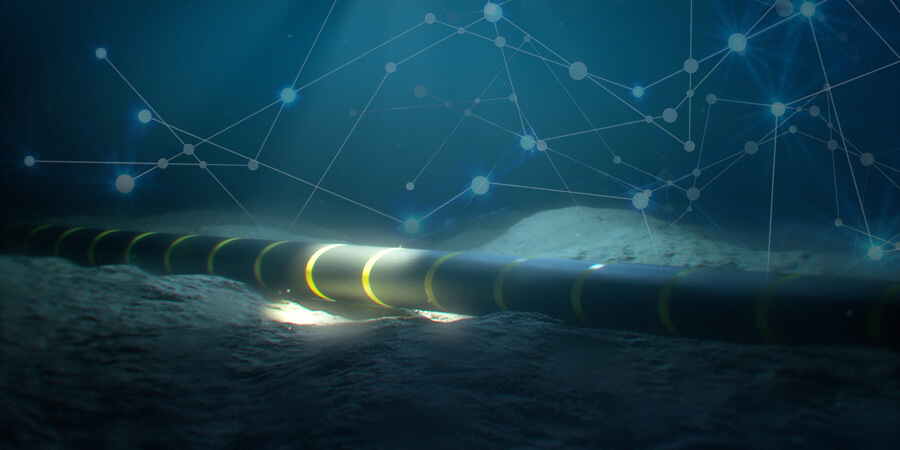Communicating with people all over the world has become so convenient that it’s sometimes taken for granted. Instant messages, high-definition video calls and high-speed internet applications have become such a necessity that almost everyone seeks access to them. Behind this technological advancement is a massive and sophisticated network of underwater cables responsible for making all this run smoothly. These crisscrossing subsea cables have transformed the way we interact, share information and do business on a global scale.
The idea of deploying underwater cables for communication dates back to the 1850s. The first successful transatlantic cable was built between Canada and Ireland in 1858. This momentous accomplishment lowered the time needed to send communications over the Atlantic Ocean. However, the original cable had technical difficulties, failed after just a few weeks and was eventually abandoned. The first permanently successful transatlantic cable was built in 1866, while another, partially laid in 1865, was finished the same year.
Today, there are about 1.4 million kilometers of underwater cables that are in service, according to TeleGeography. Some cables are short, such as the 131-kilometer CeltixConnect cable between Ireland and the United Kingdom. Others are extremely long, such as the 20,000-km Asia-America Gateway cable.
The Asia-Pacific Cable Network (APCN) was one of the first and most significant breakthroughs in submarine cable infrastructure in Asia. This system, which started its service in 1997, connected many Asian countries, including Japan, South Korea, Taiwan, Hong Kong, the Philippines, Thailand, Indonesia and Malaysia. It was critical to improving international connections inside Asia and laying the groundwork for future expansion.
Submarine cables are often owned by consortiums of telcos that work together to fund these costly projects. In recent years, web companies such as Google, Facebook, Microsoft and Amazon have surpassed traditional Internet providers in investing in their own subsea cables.
Submarine cables have also contributed to the advancement of telcos in India. Several critical international submarine cable networks have established landing points in the country’s coastal towns. According to the Observer Research Foundation, India has 17 undersea cables ending at 14 different cable landing points in five cities, including Mumbai, Chennai, Cochin, Tuticorin and Trivandrum. By 2025, India is expected to build even more cable links.
According to TeleGeography, despite significant expansion over the next five years, India’s predicted demand for connections is greater than its planned supply. Between 2021 and 2028, India’s utilized international bandwidth is expected to grow at a compounded annual growth rate of 38%. India has ideal demographic, economic and geographic advantages, which make it a potential global leader in submarine cable networks.
Meanwhile, submarine cables have promoted regional collaboration and accelerated economic progress not only within the Association of Southeast Asian Nations (ASEAN) but around the globe. One good example is the Asia-Africa-Europe-1 (AAE-1) undersea cable, which connects Southeast Asian nations like Singapore, Hong Kong, Malaysia, Thailand, Cambodia and Vietnam to the Middle East and Europe. This connectivity has opened new options for businesses, allowing them to smoothly engage in global trade and commerce.
China has also set out on an ambitious mission to spread its digital presence beyond its borders. As part of its Belt and Road Initiative (BRI), the country launched the “Digital Silk Road” project, aimed at building a massive infrastructure network, including underwater cables, to connect China with the rest of Asia, Europe and Africa.
China’s investment in underwater cables has given it more influence in Asia’s telco industry. Projects such as the Pakistan and East Africa Connecting Europe (PEACE) cable have not only enhanced China’s connectivity but have also positioned the country as an essential player in determining the region’s digital future.
The transformation of global communication in Asia — a transformation largely facilitated by submarine cables — is an ongoing journey. As technology advances, so do the needs for higher bandwidth, reduced latency and improved reliability.
The introduction of 5G technology, the growth of IoT devices and the emergence of edge computing are all elements pushing the continuous expansion and development of Asian undersea cable systems. As a result, increasingly ambitious initiatives to address these demands can be expected in the coming years.







